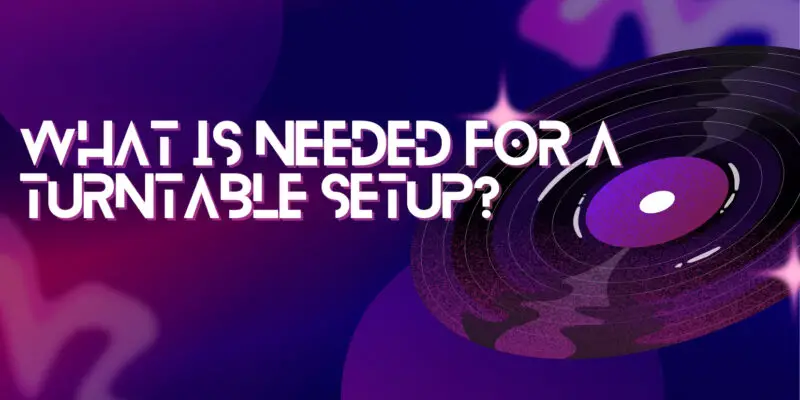Vinyl records have been making a remarkable comeback in recent years, with audiophiles and music enthusiasts rediscovering the rich and warm sound that analog music playback offers. If you’re looking to join the world of vinyl, you’ll need to set up a turntable properly. To enjoy your vinyl collection to the fullest, you’ll require more than just a turntable; you’ll need a complete setup that includes several essential components. In this article, we’ll explore what you need for a turntable setup.
1. Turntable
The heart of any vinyl setup is, of course, the turntable itself. This is the component responsible for playing your records. When choosing a turntable, consider your budget and your specific needs. Entry-level turntables are available for those on a tight budget, but if you’re looking for higher quality and more features, you may want to invest in a mid-range or high-end model. Essential features to consider include adjustable tonearm, anti-skate control, and a replaceable cartridge.
2. Phono Preamp (Phonostage)
Most modern amplifiers and receivers lack a built-in phono preamp, which is essential for amplifying the low-level signal from a turntable’s cartridge to a line-level signal that can be played through your speakers. If your amplifier doesn’t have a built-in phono stage, you’ll need to purchase an external phono preamp. Some turntables come with a built-in preamp or offer a switchable option, but dedicated external preamps often provide better sound quality and flexibility.
3. Amplifier or Receiver
To power your speakers and provide volume control, you’ll need an amplifier or a receiver. An amplifier is a straightforward option that amplifies the audio signal, while a receiver combines an amplifier with additional features like radio tuners and multiple inputs. Make sure your amplifier or receiver has the necessary inputs for your turntable and phono preamp.
4. Speakers
Good quality speakers are essential for hearing the full range and depth of vinyl records. Bookshelf speakers are a popular choice for smaller setups, while floor-standing speakers provide more power and depth. The choice of speakers should match your room size and budget. Remember that speaker placement and room acoustics also play a significant role in sound quality.
5. Cables and Interconnects
You’ll need a set of RCA cables to connect your turntable to the phono preamp, and another set to connect the preamp to the amplifier or receiver. High-quality cables can make a difference in sound quality, so invest in decent cables, but you don’t necessarily need to break the bank.
6. Vinyl Records
Last but certainly not least, you’ll need a collection of vinyl records to play on your turntable. Building a vinyl collection can be a rewarding hobby in itself. New and old releases are available, covering a wide range of genres, so you can tailor your collection to your musical tastes.
7. Cleaning and Maintenance Supplies
Vinyl records require proper care to ensure longevity and sound quality. Consider investing in a record cleaning brush, anti-static brush, and a cleaning solution to keep your records dust and dirt-free. A stylus brush for cleaning the turntable’s needle is also handy.
8. Furniture and Accessories
You’ll need a stable surface to place your turntable, amplifier, and speakers. A dedicated turntable stand or audio rack can help isolate vibrations and enhance sound quality. Additionally, consider accessories like a record clamp or weight to improve vinyl stability and reduce resonance.
9. Patience and Attention
Setting up a turntable can be a bit finicky, especially if you’re new to the world of vinyl. Be patient and take your time to properly balance the tonearm, align the cartridge, and fine-tune the settings. Pay attention to the details, as small adjustments can make a significant difference in sound quality.
In conclusion, setting up a turntable requires more than just the turntable itself. To create a complete and enjoyable vinyl listening experience, you’ll need a turntable, phono preamp, amplifier or receiver, speakers, cables, vinyl records, cleaning and maintenance supplies, furniture or accessories, and a healthy dose of patience and attention to detail. With the right setup and care, you can enjoy the warm, analog sound of vinyl records for years to come.


